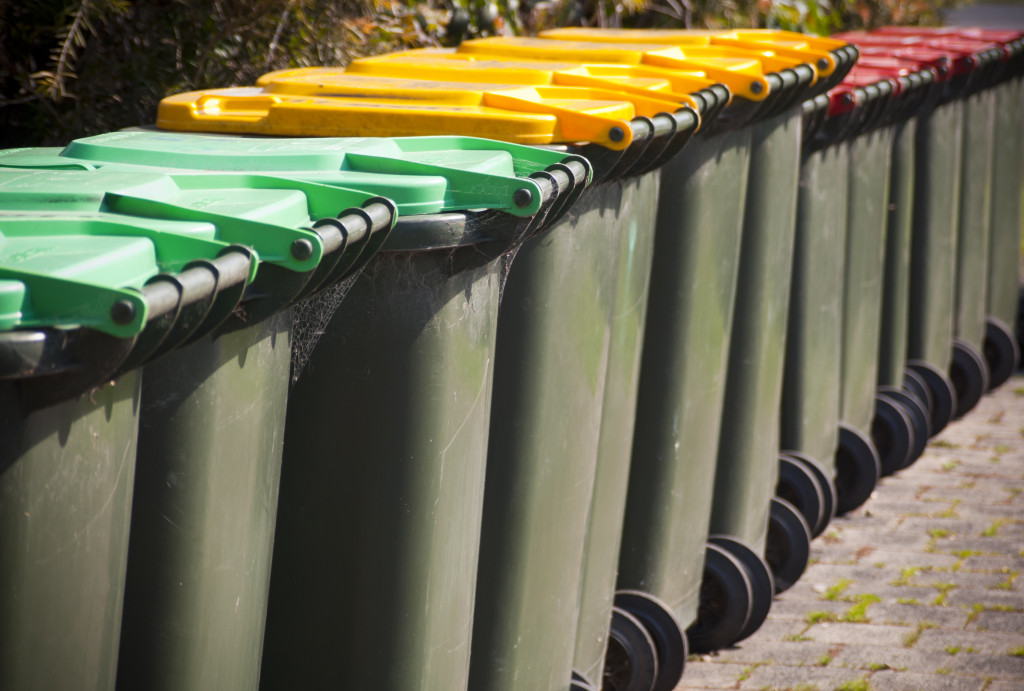Saving our environment is a complex and indispensable task, and it starts with taking responsibility for the things we use and throw away. Quite literally, conserving the world for present and future generations begins with the very hands of just about every person on Earth. While scientists have repeatedly warned against overtaxing the planet’s capacity to absorb man-made trash, hope lies in the innovation of commercial waste management solutions and the adoption of the “Circular Economy” model.
Today, waste management in commercial and industrial settings is still heavily anchored on the essential use of compactors and balers to reduce waste volume for shipping. However, advances in technology have made it easier for companies to sort out waste to extract reusable parts and monitor the actual truck movements of waste, all part of adhering to environmental laws and sustainable business practices. Some have incorporated computers in the identification, sorting, and monitoring of various components of trash, thus, benefitting from “smart waste management technology.”
Worker safety is now also a central part of waste management innovation, given the need to protect employees from possible contamination and other hazards from commercial waste, especially from electronic products. Many of these items contain traces of mercury, lead, and chemical flame retardants, which, if mishandled, pose health concerns not only to workers but also to entire communities. Therefore, the use of better technology boosts both the sustainability of manufacturing and environmental protection.
Focusing on Electronic Waste

To appreciate the significance of waste disposal innovation, it is important to first get a scope of the problem of electronic waste. Electronic waste, or e-waste, is the accumulated trash of discarded electronics that include desktop computers, laptops, tablets, and cellphones, and other gadgets.
By 2021, at least 57 million tons of electronic waste will be produced across the planet. According to Columbia University’s Earth Institute, a total of 49 million tons of e-waste was produced in 2016, which was the equivalent of “4,500 Eiffel Towers” worth of scrap metal, plastic, and elements used in the manufacture of electronics.
Data from the US Bureau of Economic Analysis show that in 2017, in America alone, the total sales of electronics had been recorded at a whopping $71 billion for phones and telecommunications products. A large percentage, if not all, of the products sold for that amount will eventually end up in a garbage heap.
While most smartphone manufacturers experienced a slight decline in sales, the number of potential e-waste to be produced remains staggering. For iPhones, at least 40 million units were sold by the third quarter of 2019. Other brands have sold millions of other smartphones for their eager customers from every continent. A BBC report says that there are more than two billion smartphone users as of 2020, and the numbers are sure to rise as new models or variants are released to satisfy a gadget-crazed market.
But why is it important for these gadgets to undergo recycling? How do gadgets pose a threat to the environment?
Applying the Principles of Circular Economy
Using the principles of what is called “Circular Economy,” major corporations and manufacturers have re-engineered their policies and procedures to ensure that their production leaves little to zero waste. For example, one smartphone has many recyclable and reusable parts that need to be sorted out, such as minute amounts of precious metals like gold, silver, and platinum. All put together, these metals still command a high market value that need not be lost to thoughtless or unsystematic discarding of trash. After all, it makes excellent business sense to recover items from trash that can be utilized to produce new goods or products, or pass them off to other companies or industries that are willing to buy them for their own production needs.
In the circular economy, electronics manufacturers exert efforts to make their production processes reduce the amount of e-waste. Such trash only adds to the mountains of landfills that are unsightly and unsafe for people and the environment. By tapping innovative waste management equipment providers, these electronics manufacturers can sort, package, and ship their production waste in a safe, responsible, and legally compliant way.
In a win-win scenario, manufacturers of electronic products can improve production cost efficiency by using technology in reducing waste and extracting materials that can be repaired, upcycled, downcycled, or resold for profit. Waste management companies also earn their keep by demonstrating their value to manufacturers in the unique services they offer and the equipment they use. Overall, consumers of electronic products and people, in general, benefit directly as environmental risks are mitigated even as they embrace the perks of gadgetry.

